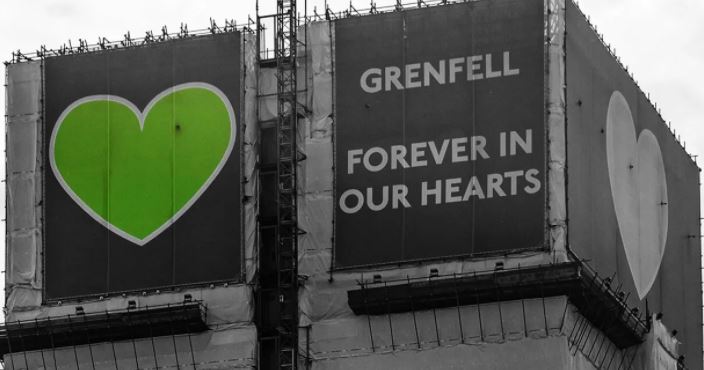In case you missed it see what’s in this section
Fraser Allen Estate Management
Festival House, Jessop Avenue, Cheltenham, Gloucestershire , GL50 3SH
Website Email 0117 2980723
The Phase 1 report (Grenfell Tower Inquiry Phase 1 report: government response - GOV.UK (www.gov.uk)) of the Public Inquiry into the fire was released in October 2019.
The restart for the enquiry was to have been on January 11th, after the Christmas break, but due to Covid restrictions and going into the third lockdown, the enquiry has been suspended, possibly until May.
Predominantly, the Phase 1 document was limited to investigating the course of events during the night of the tragedy; the background of the refurbishment of Grenfell; the role of the London Fire Brigade (LFB) and their policies; the response of the other emergency services, and celebrating and remembering the lives of those who died.
There are many recommendations for the LFB, and also others on how the emergency services can communicate and work together.
The important recommendations for people living in high-rise buildings are those where the report recommends a change in the law to place new requirements on building owners and managers; this process is now underway, notably with the introduction of the Fire Safety Bill.
A further three recommendations are aimed at building owners and managers, but without requiring legal changes.
Nine of the recommendations aimed at the Government or building owners and managers will have significant implications for the London Fire Brigade, which is working to ensure that it is in a position to implement these recommendations in the most effective way.
I’ll keep you up to date with developments as they become relevant.
February 2021 update:
On 10th February 2021, Robert Jenrick, the Housing Secretary announced that there will be a further £3.5 billion funding to be released for the Building Safety Fund.
This takes the amount of funding confirmed by the government to fully fund the cost of replacing unsafe cladding for all leaseholders in residential buildings, 18 metres and over in England, to a £5 billion investment in building safety.
These funds are to try to help the estimated 700,00+ people who are affected. However, there are many voices who are crying out that this is not enough. Also, residents of smaller blocks don’t appear to be covered by this, yet are still affected and they feel as if they’ve been forgotten.
According to a report by the Ministry of Housing, Communities and Local Government, remediation works to remove and replace unsafe Aluminium Composite Material (ACM) cladding systems have either completed or started on 77% (351) of all identified high-rise residential and publicly owned buildings in England.
Other statistics :
What does this mean for those who are buying or selling leasehold properties?
You may need an EWS 1 form:
The government have reached an agreement with the Royal Institution of Chartered Surveyors (RICS), UK Finance and the Building Societies Association (BSA) around this. Owners of flats in buildings without cladding will no longer need an EWS1 form to sell or re-mortgage their property, thanks to this agreement reached in November 2020.
This form was introduced to support homeowners who have unsafe cladding on their buildings, and there is still more work to do.
However, the EWS1 form was also being applied to buildings without cladding, and this stopped people from selling or moving home, which was causing unnecessary anxiety for many homeowners.
This new agreement means up to nearly 450,000 flat owners are now able to sell, move or re-mortgage their homes.
The bigger picture:
These updates may be good news but they are not the whole story! There are still wide-reaching implications and exclusions from support.
Lower-rise buildings, with a lower risk to safety, between 11 and 18 metres will gain new protection from the costs of cladding removal with a new scheme. However, this will be paid through a long-term, low interest, government-backed financing arrangement. In other words, the residents who own the properties will pay for it themselves eventually.
Under this scheme the government say no leaseholder will ever pay more than £50 a month towards the removal of unsafe cladding (yet for how many years?).
There are still people who are unfairly trapped in a vicious cycle of not being able to move because of pending works, but also not able to stay living at the property and may still be liable for costs.
Also, with the EWS1 form, this is bringing up a number of issues around costs. For example, this includes so-called ‘intrusive’ surveys to understand what is in the cavity and this will cost around £1500.
The government are looking at ways to address ongoing concerns about the availability of professional indemnity insurance linked to the issues with EWS1 forms.
With some of the intrusive surveys, leaseholders need to consider if the building is listed and consequently they then need to obtain listed building consent to do the work.
And three years after the tragedy people are still living in flats they are unable to sale, are un-mortgageable, uninsurable and unsafe. However, hopefully, the additional funding, and the removal of the EWS1 form where not required, should make things move more quickly.
A few resources you might find useful:
Government steps in to help homeowners caught up in 'EWS1' process - GOV.UK (www.gov.uk)
Our next blog is looking at how stress is affecting block managers, during lockdown.
Festival House, Jessop Avenue, Cheltenham, Gloucestershire , GL50 3SH
Website Email 0117 2980723In case you missed it see what’s in this section
Listings